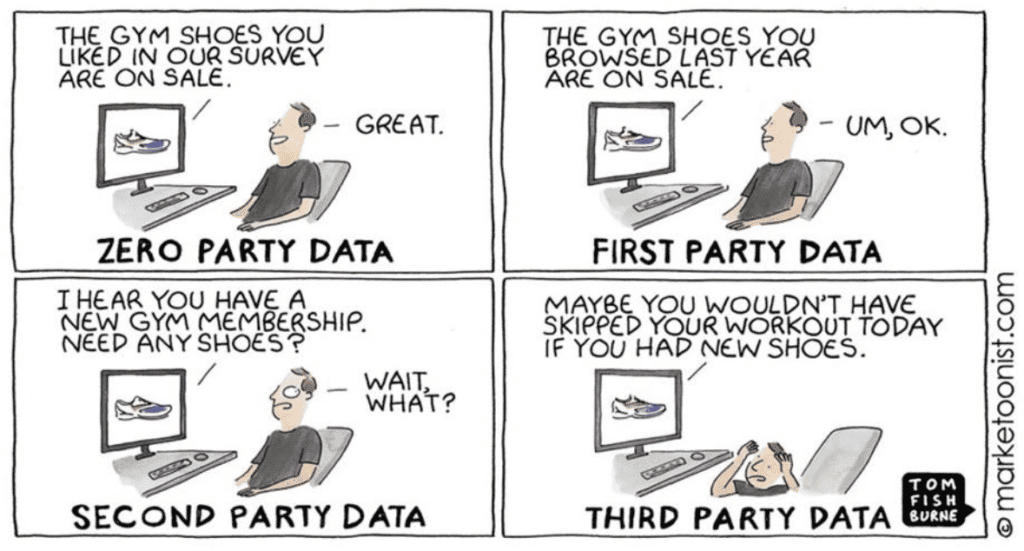First-party data, Brand data, CRM data and many more such data terminology is something all marketeers are not just talking about, but also making active use of due to increasing concerns on consumer privacy.
First, let’s demystify the various types of customer data and I’d like to borrow from the famous content marketing cartoonist, Tom Fisbourne, to explain this –

Each type of data has its strength and scale:
- Zero party data allows precise insights but scale is limited
- First-party data allows for depth and scale
- Second and third-party data allow for limited insights but provide scale on consumers
Thus, first-party data offers the best trade off of value to opportunity:
- Transparency & Accuracy – Collecting data directly from the consumers, first-hand transparency into the collection source
- Quality, Consumer Opted-in Audiences – Data obtained from direct consumer relationships, with relevant & opted-in audiences
- Value – Access to rich customer information to drive incremental benefits
- Cost Effective – Costs associated with collecting & managing data, but does not need to be purchased as it is owned
- Recency, Refresh & Control – Ability to control data recency & refresh and tailor the data to meet specific goals
- Precision & Flexibility – Access to individual-level insights & signals
Our four step recommendations for marketers looking to evolve first-party data strategy to future proof digital marketing:
- Develop a Trust Framework to collect first-party data
- Invest in 3 T’s: Talent, Technology and Team Collaboration
- Align Consumer needs to Business needs
- Establish a roadmap to Data maturity
Author: Rashmi Sehgal, SVP, Digital Media Planning, Zenith
SIGN UP FOR ZENITH INSIGHTS



